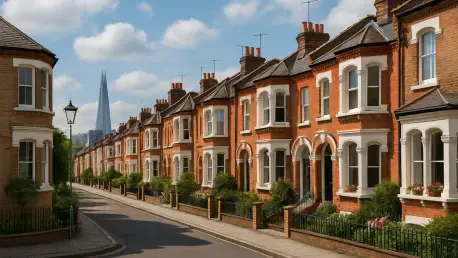In the heart of London, a pressing dilemma unfolds as the city’s desperate need for housing clashes with the imperative to preserve its rich historical tapestry, sparking intense debate over urban priorities. The recent decision by Jules Pipe, the deputy mayor for planning, regeneration, and the fire service, to approve a 25-story, 228-home Build-to-Rent tower in Abbey Wood has ignited a fierce debate. This project, located adjacent to the Elizabeth Line, was initially rejected by Bexley Council due to concerns over its towering height, potential flood risks, and the threat it posed to the nearby historic Lesnes Abbey. Yet, the override of this rejection underscores a broader narrative: the acute housing shortage in London may be taking precedence over heritage preservation. As the city grapples with accommodating a growing population, such decisions highlight the complex interplay between modern urban needs and safeguarding the past, setting the stage for a deeper exploration of where priorities should lie in this densely populated capital.
Balancing Housing Needs with Historical Value
The approval of the Abbey Wood tower by regional authorities reveals the stark tension between delivering much-needed homes and protecting cultural landmarks. Jules Pipe emphasized that the public benefits of this development, particularly the inclusion of 35% affordable housing units with a significant portion designated as London Living Rent homes, outweighed the potential harm to Lesnes Abbey. This decision was not made lightly; considerable weight was given to heritage concerns, yet the urgency of addressing London’s housing crisis tipped the scales. The project also promises to transform an underutilized brownfield site near Abbey Wood Station into a vibrant area with non-residential town center space and public realm enhancements. Such strategic use of space in highly accessible locations is seen as critical to meeting housing targets set by broader governmental expectations. This case exemplifies how regional policies often prioritize immediate societal needs over localized objections, navigating a delicate balance in urban planning where progress and preservation are perpetually at odds.
Strategic Development Amid Policy Conflicts
Examining the broader implications of this project reveals a nuanced conflict between local and regional urban planning policies, particularly regarding tall buildings. While Bexley Council’s initial rejection stemmed from discrepancies with local guidelines on height and environmental impact, Jules Pipe deemed the tower’s design acceptable within the context of the area’s emerging character. Revisions by the developer, Abbey Wood Sedgemere Limited, further bolstered the case for approval, with updates to flood risk assessments and drainage strategies addressing earlier concerns by channeling water into the sewer system at Harrow Manorway. This adaptability highlights a trend in London’s urban strategy: leveraging underused sites to maximize housing output while attempting to mitigate drawbacks. The decision reflected a commitment to boosting housing delivery, aligning with the mayor’s vision for growth. As similar projects have faced scrutiny in the past, this approval signals a potential shift toward prioritizing accessible, high-density developments, even when heritage and environmental objections linger in the background.









